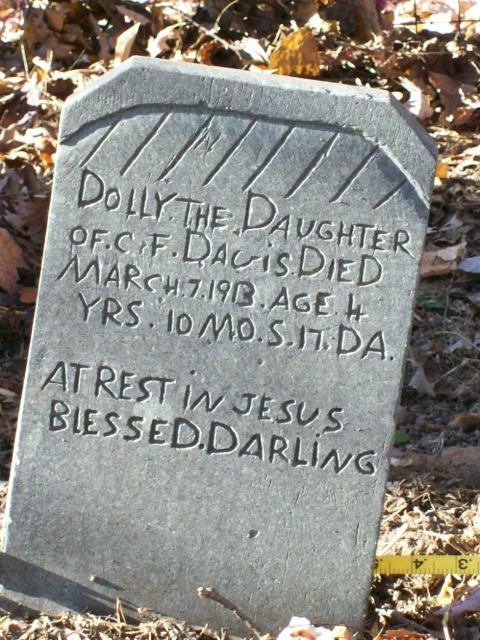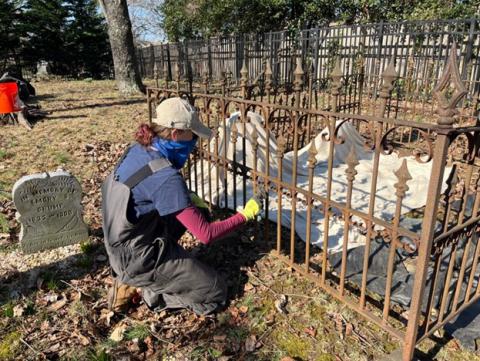
Alert:


In 1977, historian Jane Kirkpatrick-Wall provided as a gift to the Fairfax County Public Library (FCPL) a document which transcribed headstones at 100 Fairfax County cemeteries. Staff, volunteers and visitors to the Virginia Room at FCPL continued to add to these documents and have since recorded over 350 individual cemeteries. In 1994, the Board of Supervisors of Fairfax County (BOS) requested that the records be updated and made available to researchers. This resulted in the manuscript, “Cemeteries of Fairfax County, Virginia” by Brian Conley, a reference guide and updated survey of some 360 surveys.

The purpose of this work is to create an accurate survey of cemeteries in Fairfax County. This will include updated location information including nearest street address, geographic coordinates and tax-map and parcel number. Furthermore, it will provide information regarding current legal ownership, current caretakers and a general description of the current conditions. Where feasible, headstone transcriptions may be provided, as well as an estimate of any unmarked burials. This information will assist genealogical researchers, staff providing comment for development projects, homeowners and homeowners associations and scholars studying the history of Fairfax County.
The work will consist of multiple phases. In the first phase, geographic information regarding cemetery locations will be gleaned from the following: CART’s internal geodatabase and site files, the Virginia Department of Historic Resources (VDHR)’s historical sites geodatabase, the Virginia Cultural Resource Inventory System (VCRIS), Fairfax County Department of Tax Administration’s parcel mapping service and documents at the Virginia Room of the Fairfax County Public Library.
Next, staff will compare these data and sort them into categories to prioritize their survey, enter deed and ownership data and include any supporting documentation in the database, including historic background or deed research where possible. Staff also will use modern and historic aerial photographs as well as LiDAR to help locate cemeteries for which there may be general information but not specific site boundaries.
Staff will attempt to field locate the cemeteries based on the mapping, with landowner permission. They will collect location data and photographs and complete a cemetery survey form to update surveys conducted in the past by Conley and others. Care will be taken to include, where possible, locations of unmarked graves.
Staff will ask for public assistance in identifying descendants & stakeholders. This will be achieved through deed research, genealogical research, public outreach through social media, public events and publications. This collaboration may include future projects such as oral histories, interpretive materials and cemetery cleanups and maintenance. Finally, CART will create a public facing cemetery survey database or GIS application, along with a form for the public to add their own cemetery surveys or to notify the county of a potential cemetery that is not on the database. As well, CART hopes to publish a new edition of “Cemeteries of Fairfax County” for researchers and the public to use to learn more about the county’s rich history.

Historic cemeteries are some of Fairfax County’s most important and unique cultural resources. They are reminders of settlement patterns, demographic trends, historic events, public health trends, religious beliefs and societal norms. They are warehouses of folk-art spanning from the simple to the inspirational. However, over time many cemeteries, especially small family burial plots and the burials of marginalized groups such as enslaved and free Blacks, Native Americans, the imprisoned and the poor are particularly difficult to research and locate. These cemeteries represent important avenues of scholarship as well as physical reminders of the whole of our history. They are of specific interest to the authors, and additional resources will be spent to document and record those cemeteries that have been abandoned or lost to time.
For more information, please reach out to Aimee Wells:
Aimee.Wells@fairfaxcounty.gov.
